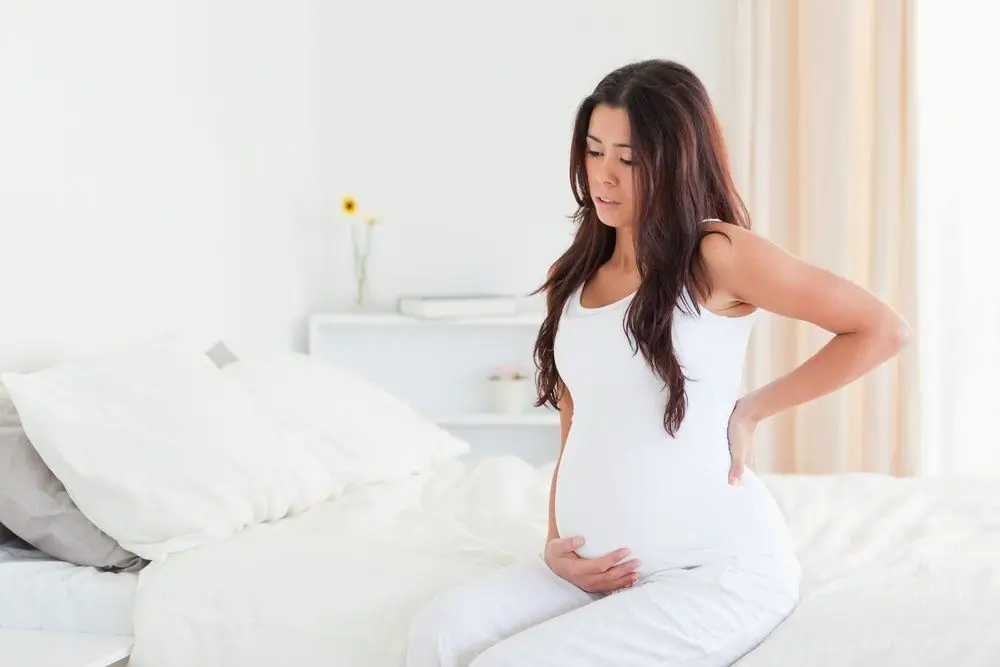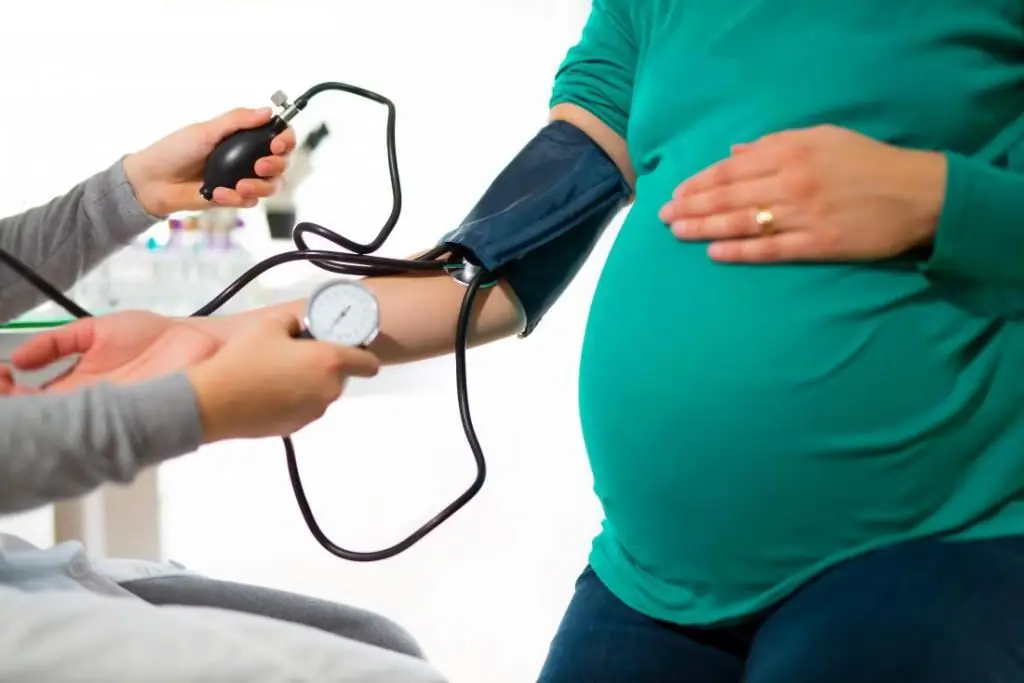2025 Author: Priscilla Miln | [email protected]. Last modified: 2025-01-22 17:55:15
Women expecting a baby need to be especially attentive to their he alth. Even a seemingly ordinary wart during pregnancy can cause a lot of trouble. Is it dangerous and how to get rid of it is described in this article.
What is a wart?
Warts are called benign neoplasms. They are caused by HPV, the human papillomavirus. Almost everyone has warts. Neoplasms can be easily transmitted through objects or through direct contact. Sometimes a wart does not make itself felt for a long period.
A woman can have a tumor (and not know about it) even before pregnancy. And during this period, hormonal changes in the body begin, immunity decreases. This all stimulates the appearance of a hidden wart during pregnancy.

Types of warts
Neoplasms most often appear on the limbs, face and mucous membranes. Warts are divided into several types:
- Common papillomas look like round nodules ranging in size fromone to ten millimeters. Warts protrude slightly above the skin. The color of papillomas can be brown, pink or flesh. Papillomas are dense, with a rough surface. Mostly warts appear on the face.
- Flat papillomas do not grow more than three millimeters. Such neoplasms protrude slightly above the skin. Most often, warts appear on the face and back of the hands. The growths may be brown, yellow, or skin-colored. Flat warts appear in a whole group.
- Plantar warts during pregnancy are more of a concern. Such papillomas are initially very painful, and when a woman is expecting a baby, the discomfort also increases. Soreness occurs due to constant friction. Plantar warts are yellowish, dense, similar to dry corn. If papillomas cause severe discomfort, they are removed.
- Genital warts appear on the genitals, in the folds. At first they are small pink bubbles, then they become spiky and grow to a whole bunch.
- Filamentous papillomas are elongated, attached to the skin on a small stalk. They can grow up to three centimeters long. Most often appear on the eyelids, in the armpits, on the genitals and neck. Such a wart during pregnancy is more common than other types.

Causes of warts
The main cause of warts during pregnancy is a virus in the body. The infection occurs due toweakening of the immune system and hormonal changes that occur during the period when a woman is expecting a baby. At this time, skin formations grow strongly.
Warts are caused by the papilloma virus in the body. It has several varieties. Most often, warts are simple and appear on the body. Worse, if neoplasms occur on the genitals. This can create problems during gestation.
Why are warts dangerous during pregnancy?
In itself, a wart during pregnancy does not pose a danger to the mother and unborn baby. But self-treatment in folk ways can greatly harm. If the warts do not cause pain and do not grow, it is better not to touch them until the baby is born. Treatment requires only genital warts that appear on the genitals.

Some neoplasms can grow so that they create an obstacle to the birth of a child. When he comes out of the mother's womb, the warts that appear on the birth canal are torn, burst. As a result, heavy bleeding begins, and the baby can catch the virus.
Warts can appear a couple of days after birth or in the first months of life. Dangerous are those neoplasms that occur in the larynx. As a result, the baby's breathing becomes very difficult. When genital warts are found, pregnant women are given a caesarean section.
When should warts be removed?
Can warts be removed during pregnancy? itdo is optional. Often there is a reverse process of manifestation of the virus. After the baby is born, the warts on the mother's body may disappear on their own in a short period of time.

During pregnancy, doctors do not recommend removing tumors, especially in the first and third trimester. It can even provoke premature birth. But in itself, the removal of warts is carried out surgically with anesthesia and immunostimulating agents, and this is unacceptable when carrying a child.
But there are still several reasons why growths may be removed during pregnancy. The operation can be done if the warts have changed their color or shape, or there is a threat of a serious overgrowth of papillomas. Also, growths can be removed if they cause pain.
Contraindications for wart removal
The decision on the possibility of carrying out the procedure for getting rid of papillomas is made by the obstetrician. Removal of warts during pregnancy is prohibited during pregnancy up to two weeks and after the 30th. To get rid of papillomas on your own, you can not use celandine juice. Warts are not removed with liquid nitrogen and anesthesia.

What to do if a wart is found?
If warts appear during pregnancy, you cannot tear them off yourself. This can lead to further spread of the virus, and as a result, new papillomas will appear. And even if you pick out a wart, this does not mean getting rid of it. Papillomas have very long roots that go deep into the dermis.
If neoplasms are detected, it is urgent to contact a therapist or dermatologist. They will determine if a neoplasm has appeared, and what treatment is required, taking into account the individual characteristics of the body and pregnancy.
Wart removal methods
There are several ways to remove warts. Laser therapy is one of the most popular procedures. The level of penetration of rays is selected individually. The laser is directed to the intended point and cauterizes it. The wart dies and falls off on its own. After the procedure, at first a small wound remains, which then disappears without a trace.
Warts are removed by electrocoagulation. This is a safe and effective procedure. The method helps to get rid of even small warts growing on the leg. To remove neoplasms, only one session is required, the duration of which does not exceed ten minutes. Current permeability is strictly controlled, the method has no age restrictions.

Radio wave wart treatment lasts 20 minutes. The procedure is painless and does not pose a threat to he alth. During the session, high-frequency waves are used that cut tissue like a knife. The wart just gradually evaporates. Then a small spot remains, which disappears on its own after a short time.
Cryotherapy is a method withusing liquid nitrogen, its temperature is minus 400 degrees. When the substance gets on the wart, it instantly freezes, the cells die off and the neoplasm falls off a week (or 10 days maximum) after the procedure.
Can warts be removed during pregnancy? If there is no serious reason for this, then the neoplasms are left until the birth of the child. All of the above methods include pregnancy and lactation as contraindications. But still, if wart removal is required, then this is done only with the help of electrocoagulation or laser therapy.
Folk treatments for warts
If a wart during pregnancy interferes greatly, it can be removed by folk methods. For example, for six days, apply a compress of grated potatoes with a peel to the neoplasm. Good celandine juice helps to cope with warts. They lubricate neoplasms until they completely disappear.

One of the effective remedies in the fight against warts is aloe. The neoplasm is strongly steamed and the pulp of the plant is applied to it. Then a gauze bandage is applied on top. The compress should be done in the evening and left until the morning. Treatment takes place in ten days.
You can also use ordinary hydrogen peroxide. She lubricates the wart for a week. Before using any of the alternative methods, it is necessary to test the skin for the presence of allergic reactions to the components of the therapy. In addition, before using any of the above methods (inincluding folk) removal of warts pregnant should consult with an obstetrician.
Recommended:
Pain during urination during pregnancy: causes, possible deviations and diseases, treatment methods

Pain during urination in women during pregnancy is an unpleasant phenomenon, and in some cases dangerous to the he alth of the mother. After all, it is during the period of gestation that the female body is most vulnerable to various kinds of infections
How dangerous is a cough during pregnancy. Cough during pregnancy: treatment

In this article I would like to talk about how dangerous a cough is during pregnancy and what needs to be done to cope with this symptom. You can read about all this and much more about what is useful in this text
Hypotension during pregnancy: possible causes, symptoms, treatment, normal pressure during pregnancy, advice and recommendations from a gynecologist

What is hypotension during pregnancy? Is it a simple ailment, or a severe pathology that requires immediate medical attention? That is what we will talk about today. During the period of bearing a baby, every woman is faced with various ailments, because the body works "in three shifts", and gets tired in order. At this time, chronic diseases are exacerbated, and "sleeping" ailments are awakened, which could not be suspected before pregnancy
Headache during pregnancy: causes and treatment. Cure for headaches during pregnancy

Headache during pregnancy is a fairly common occurrence in expectant mothers. According to statistics, every fifth woman suffers from it. Pain can be a symptom of a wide variety of pathological conditions, but then its characteristics will be different. Of great importance for the diagnosis of diseases is the nature of sensations, their localization, duration, conditions under which they arise, weaken or intensify
Increased tone of the posterior wall of the uterus during pregnancy: causes, features of treatment and recommendations

Local increase in uterine tone is common during gestation and in most cases is not a dangerous complication. But sometimes it is a pathological condition that can be a threat to abortion. The following describes the symptoms and causes of uterine hypertonicity, what it is, diagnostic methods and treatment tactics

